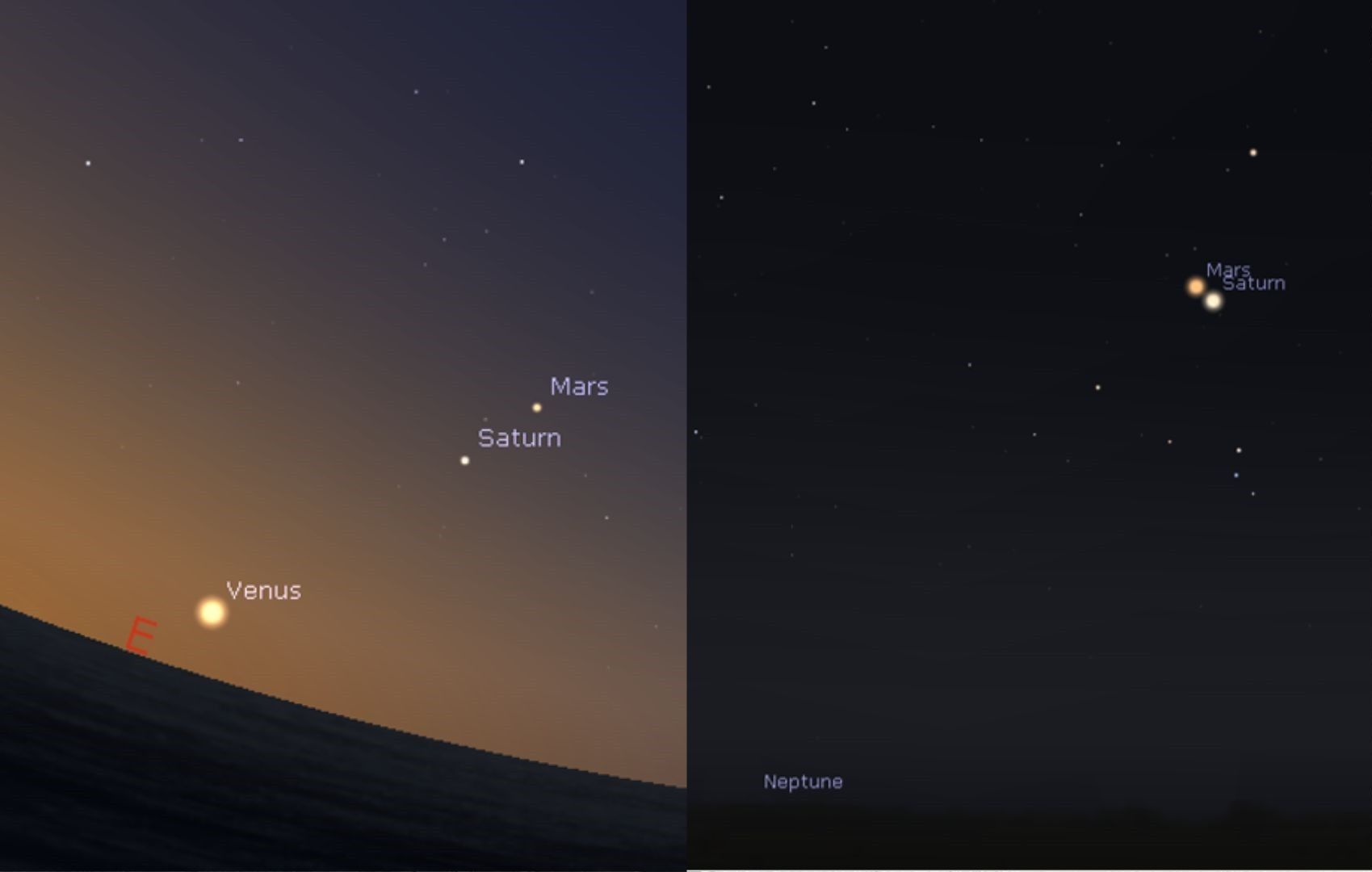4 planets aligning on April 4, how to see — PAGASA

MANILA, Philippines — The Philippine Atmospheric, Geophysical and Astronomical Services Administration (PAGASA) announced there would be a planetary alignment involving four planets during the early hours of April 4 over Philippine skies.
Venus, Neptune, Saturn, and Mars will be aligned on the morning of April 4.
PAGASA describes a planetary alignment as an Astronomy term for when multiple planets gather closely on one side of the sun at the same time.
"This provides a stunning celestial display that can be observed without the need for special astronomical equipment," added PAGASA.
Venus, Saturn, and Mars can all be seen with the naked eye, while a good view of Neptune will require a modest telescope or high-powered binoculars.
"Venus can be seen lying very low in the morning sky. Mars and Saturn will be sitting low on the eastern horizon and will remain visible until the end of the month," the agency said.
Related: NASA helicopter's mission ends after three years on Mars
The largest planet in the Solar System, Jupiter, can be seen in the western sky after sunset, though it will difficult to observe toward the end of April because of the sun's glare, while the smallest planet Mercury won’t be visible because of its proximity to the sun.
Two years ago, Mercury, Venus, Mars, Jupiter and Saturn aligned in their natural order from the sun for the first time in 18 years.
Other astronomical events PAGASA noted for April are the Lyrid Meteor Shower during the month's second half (peaking on the 22nd), the passage of Comet 12P/Pons-Brooks, and excellent views of constellations Ursa Major, Leo, Leo Minor, Hydra, Sextans, Crater, and Antlia.
Comet 12P/Pons-Brooks will reach its brightest point and pass perihelion on April 21 and will be visible through the use of a small telescope or 40-50mm aperture binoculars, however, PAGASA noted given its proximity to the sun that the comet might easily disappear into the sunset glow.
The agency also said April is the best time to look at famous deep sky objects such as the Cigar Galaxy, the Pinwheel Galaxy, the Owl Nebula, the Leo Triplet of galaxies, and the Southern Pinwheel Galaxy.



















